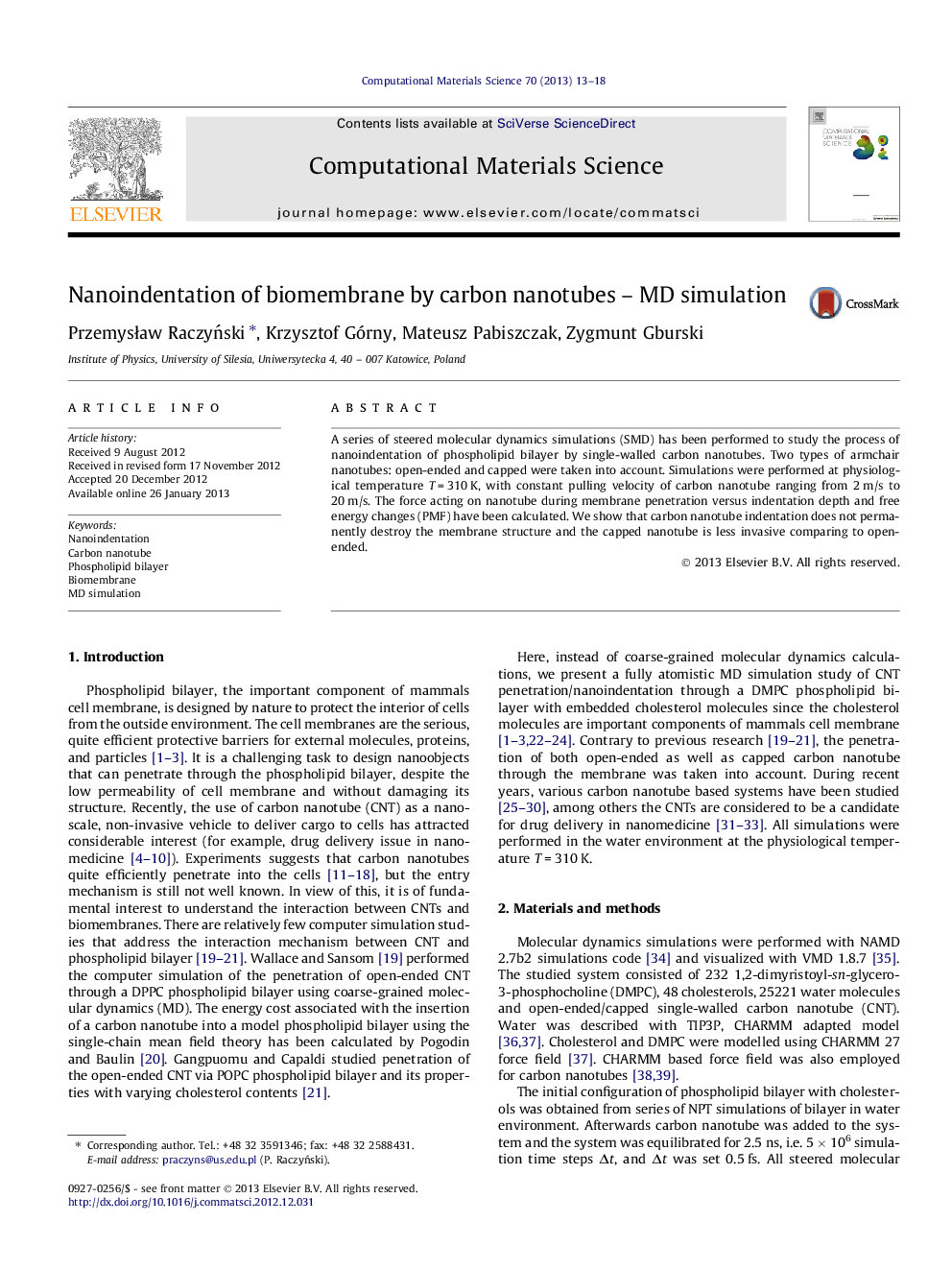| Article ID | Journal | Published Year | Pages | File Type |
|---|---|---|---|---|
| 1561210 | Computational Materials Science | 2013 | 6 Pages |
A series of steered molecular dynamics simulations (SMD) has been performed to study the process of nanoindentation of phospholipid bilayer by single-walled carbon nanotubes. Two types of armchair nanotubes: open-ended and capped were taken into account. Simulations were performed at physiological temperature T = 310 K, with constant pulling velocity of carbon nanotube ranging from 2 m/s to 20 m/s. The force acting on nanotube during membrane penetration versus indentation depth and free energy changes (PMF) have been calculated. We show that carbon nanotube indentation does not permanently destroy the membrane structure and the capped nanotube is less invasive comparing to open-ended.
► Carbon nanotube can penetrate bilayer without permanent damage of membrane structure. ► Penetration of capped nanotube couses less damage to the bilayer than open-ended ones. ► Free energy barrier for indentation by capped CNT is lower than for open-ended. ► Self-sealing process of phospholipid bilayer after nanoindentation is quite effective. ► Carbon nanotubes can be considered as effective nanocontainer for drug delivery.
